I recently had a paper published in Current Opinion in Otolaryngology and Head & Neck Surgery titled, “The mechanism of action for laryngeal manual therapies: the need for an update.” The article may be found at this link.
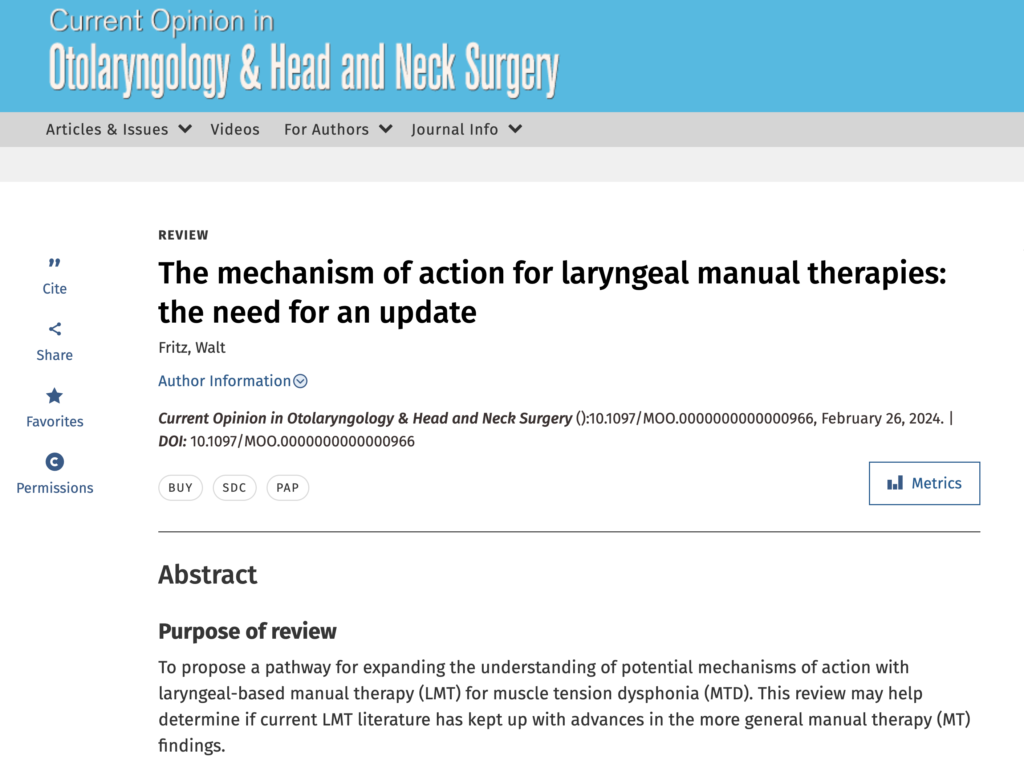
Fritz, Walt. The mechanism of action for laryngeal manual therapies: the need for an update. Current Opinion in Otolaryngology & Head and Neck Surgery ():10.1097/MOO.0000000000000966, February 26, 2024. | DOI: 10.1097/MOO.0000000000000966
New Book: Manual Therapy for Voice and Swallowing: A Person-Centered Approach, by Walt Fritz, PT
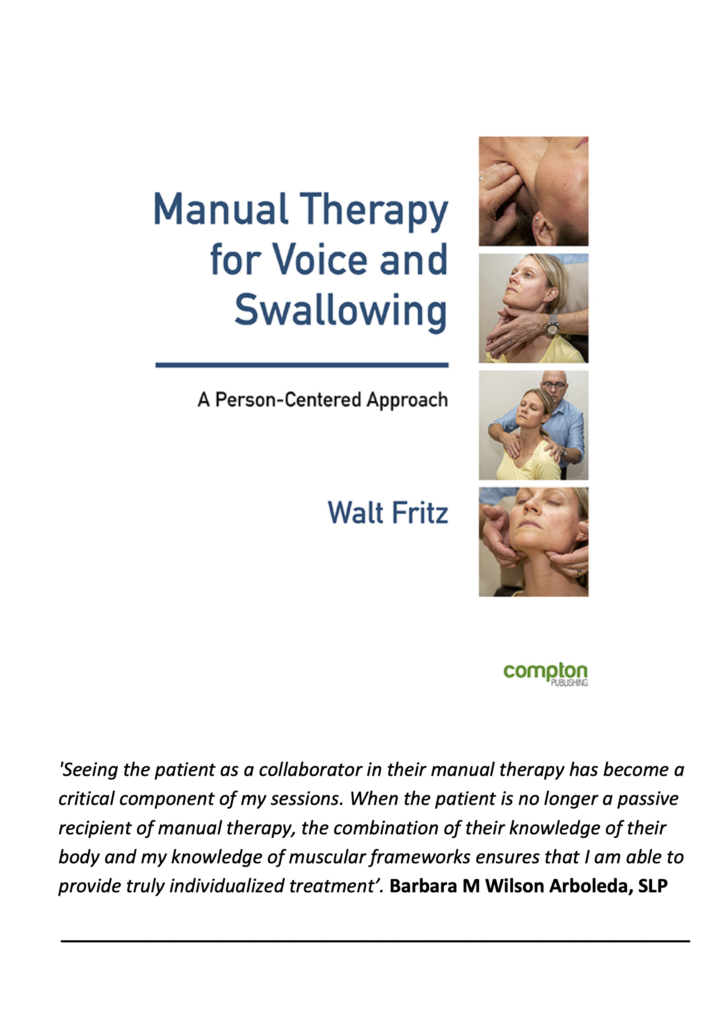
You can order the book through:
US: Amazon.com
UK: Amazon.co.uk
Spain: Amazon.es
France: Amazon.fr
Germany: Amazon.de
Italy: Amazon.it
The Netherlands: Amazon.nl
Writing Manual therapy in voice and swallowing: A person-centered approach has marked a high point in my career. It resulted from decades of experience in the manual therapy tenches, including some difficult life lessons. Documenting many of the underlying problems with typical manual therapy narratives, ones that often go unchallenged, it builds from a wider range of explanatory narratives to craft an approach that depends more on the individual patient’s life experiences rather than the clinician’s often biased views. In reality, it is a blend of the two, but an approach that attempts to never let one stomp on the other. The book is both theoretical and practical, hopefully meeting the needs of many audiences.
A sample book chapter, Building a model, may be accessed here.
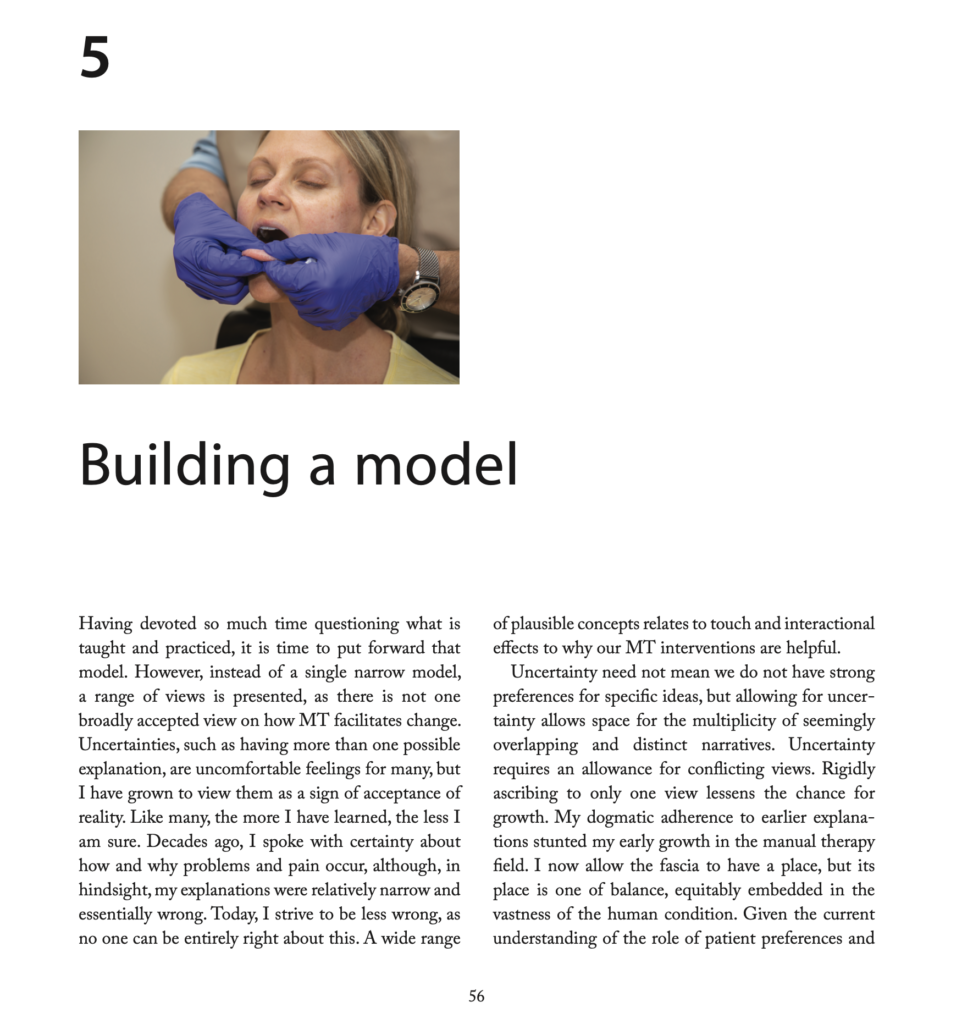
At the heart of this new book is a departure from the norm of expert clinician directing anatomically-based and traditional treatment regimes. Instead, Walt Fritz presents a scenario wherein the client, as an equal, is leading the clinician, through responses to questions, to behaviors, and to touch.
This shared decision-making approach questions and challenges existing manual therapy practice and in the words of the Author, aims to ‘…introduce to you an updated mechanism of action to explain MT effects and then turn to intervention. If you are currently using MT in your practice for voice, swallowing, breathing, oral-motor, or other related issues, the material presented here may challenge what you’ve been taught…’. Consider this an academic text on touch-based science, filtered through a more neutral lens.
Eminently practical and profusely illustrated with clear, step-by-step images and text, the Author presents evaluation guidelines, conditions that lend themselves to manual therapy, along with specific and in-depth interventions. The book is thoroughly referenced and illustrated.
Contents: Introduction. Part one: Setting the scene. Crossing a bridge, Histories, deconstructions and problems. Inconsistencies in the research. Building a model. The patient-centered model. Part two: Practical applications. Where to begin. Communication and dialoguing. Process application roadmap. Laryngeal region. Submental sublingual region. Tongue. Scar and fibrotic regions. The jaw. The neck. Anterior cervical and retropharyngeal region. Shoulder and upper chest region. The thorax. The pelvis. Self-stretching. Patient-centered exercise.
About the Author: Walt Fritz, PT
Walt Fritz is a physical therapist from Upstate New York, USA. Since beginning work as a manual therapy educator in the mid-1990s, he has more recently evolved into teaching a unique interpretation of manual therapy for speech-language pathology, voice, and related communities. This approach advances views of causation and impact from historical tissue-specific models into a multifactorial narrative, leaning heavily on biopsychosocial influences. Using a model of evaluation and intervention that incorporates shared decision-making rather than clinician-as-expert, his principles apply to a broad spectrum of intervention models. Seeing the utility of manual therapy not as a standalone treatment but as an integral part of clinicians’ more extensive body of work, Walt makes his approach easily assimilated into those treatment protocols.
Walt teaches internationally to speech-language pathologists, voice professionals, massage therapists, physical therapists, and other clinicians through his Foundations in Manual Therapy Seminars, www.WaltFritz.com. He maintains a physical therapy practice in Lima, NY.
You can order the book through:
US: Amazon.com
UK: Amazon.co.uk
Spain: Amazon.es
France: Amazon.fr
Germany: Amazon.de
Italy: Amazon.it
The Netherlands: Amazon.nl
When asked why I wrote this book, my response is measured. People’s beliefs and experiences are difficult to challenge, and this book challenges much. Having been trained in specific models and modalities, we tend to act in tribal ways, protecting and defending that model and turning away from models that offer conflicting information. This book challenges manual therapy tribalism.
Having stayed the course of myofascial release for 15 years, I began to see holes in the theory and the necessity for specific methods to be followed in the intervention. Is there tangible, irrefutable proof that when we touch in a particular manner, we preferentially bias fascia, excluding other tissues? Is there similar proof that we can change fascial properties with that touch? I wasn’t convinced of either. But my skepticism extends to other narrow-focus models in manual therapy, leaving me with more questions than answers. Is weakness the cause of pain? If not, then why are we so bent on getting people stronger? Exercise is helpful for many problems, but is strengthening the key, or is movement the common denominator of change? Muscles have been the target of manual therapy clinicians for eons, but what drives a muscle to exhibit negative properties? Is the muscle acting in isolation, or are the demands placed on them by a static posture, irritated nervous system, poor technique, or other potential confounders influencing the muscle to display problems?
Our training is good, allowing us a language to help others. But much of our training comes from sources selling a concept. With that retail mindset comes attempts to sway the public (us) into buying their unique brand of intervention. While most modalities are helpful, do they work for the reasons the seller claims, or are there underlying common denominators? The answer might be “possibly, both.” Having wandered through many models of manual training over my nearly 40-year career as a physical therapist, I began to look at one of the common denominators of both their influence on and how to better include them in the therapeutic interaction.
For the past ten years, I’ve gradually become embedded in what might be considered a non-traditional manual therapy community. The speech-language pathologist (SLP) community has a shorter history of utilizing manual techniques to remedy voice and swallowing problems. First mentioned in their professional literature in 1980, it has been a small but regular inclusion in treating muscle tension dysphonia (hoarseness). In 2013, I was invited to present to a group of SLPs on the work I use and teach, and from that class, a new opportunity arose. Working with these clinicians and their populations has allowed me to view my work in a new light. SLPs taking my in-person and online training often have little, if any, experience using their hands in the manner many of us find familiar. With little background, I had a chance to set a new narrative: apply the common denominator of the therapeutic interaction as the primary intervention strategy. Instead of teaching them that the target for their manual therapy techniques is fascial restrictions, muscle tension or knots, lymph pooling, nerve tunnel syndromes, etc., I’ve taught them to let the target be their patient’s acknowledgment that a core condition has been met. I’ve switched the evaluation process from one of the clinicians finding the problem and prescribing the fix (the model most of us work from) to the patient defining when the familiar issue is being addressed via the therapist’s touch. This process is steeped in the underlying principles of the evidence-based model, namely that patient perspectives and values be given a relatively complete and equal weighting with the actual research and the clinician’s experience applying that research evidence. This is the core of my approach and the basis from which the book was written.
Feedback from SLPs who’ve taken the class and purchased the book has been positive, with many surprised at the positive responses their patients have given from the work. Manual therapy is not a miracle or a missing piece, but it is another form of communication. Having choices is an asset when approaching each patient. Some respond well to exercise, others to behavioral or technique-based instructions, while others respond positively to touch. Adding manual therapy allows you more options.
Will the manual therapist with more general interests find value in a book specifying instruction in voice and swallowing disorders? Since the inception of my SLP-directed continuing education classes, there has been a steady inflow of massage therapists, physios, osteopaths, and others attending the classes. Each has their reasons for attending. Some because of their niche interests in working with performers, working through the face and neck, or have heard about my shared decision-making approach and wish to learn more. Still, others resonate with my counter-culture approach away from tissue-based narratives. Most leave with a new understanding, seeing themselves stand in a different context, one of a co-creator of change.
While many will disagree, we don’t treat fascia, muscle tension, knots, trigger points, malpositioned larynxes, or any other singular issue; we treat humans. My approach and the book are dedicated to this principle.
Walt Fritz, PT
Physical therapist
www.WaltFritz.com

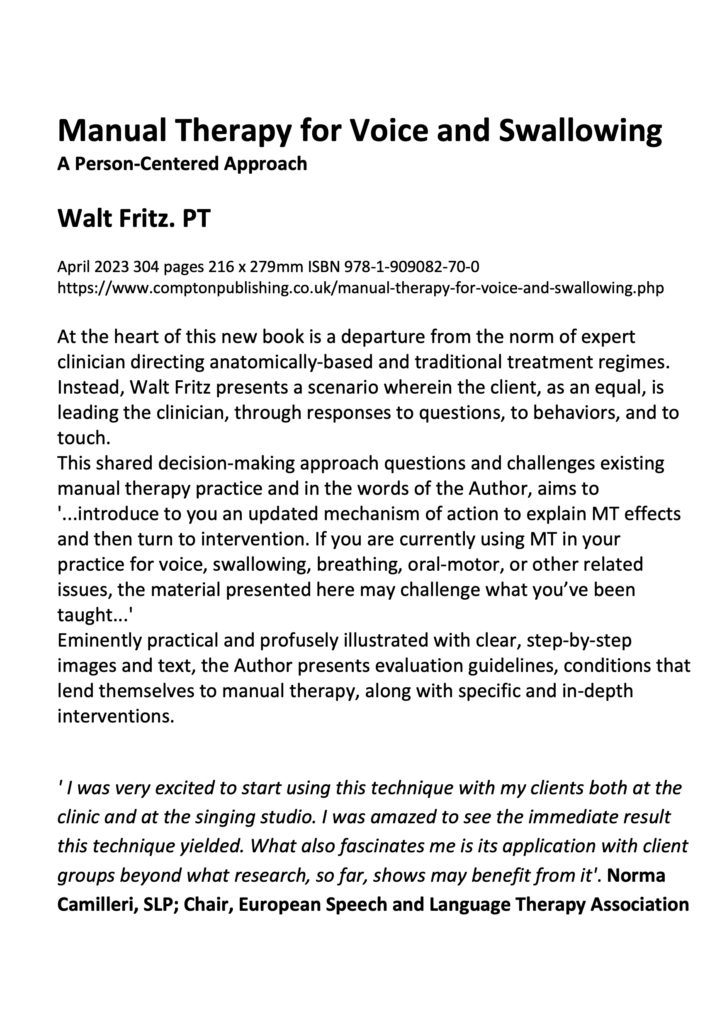
Meet Vera Zsentis (@vzsenits) the talented artist who created the medical illustrations for the book.

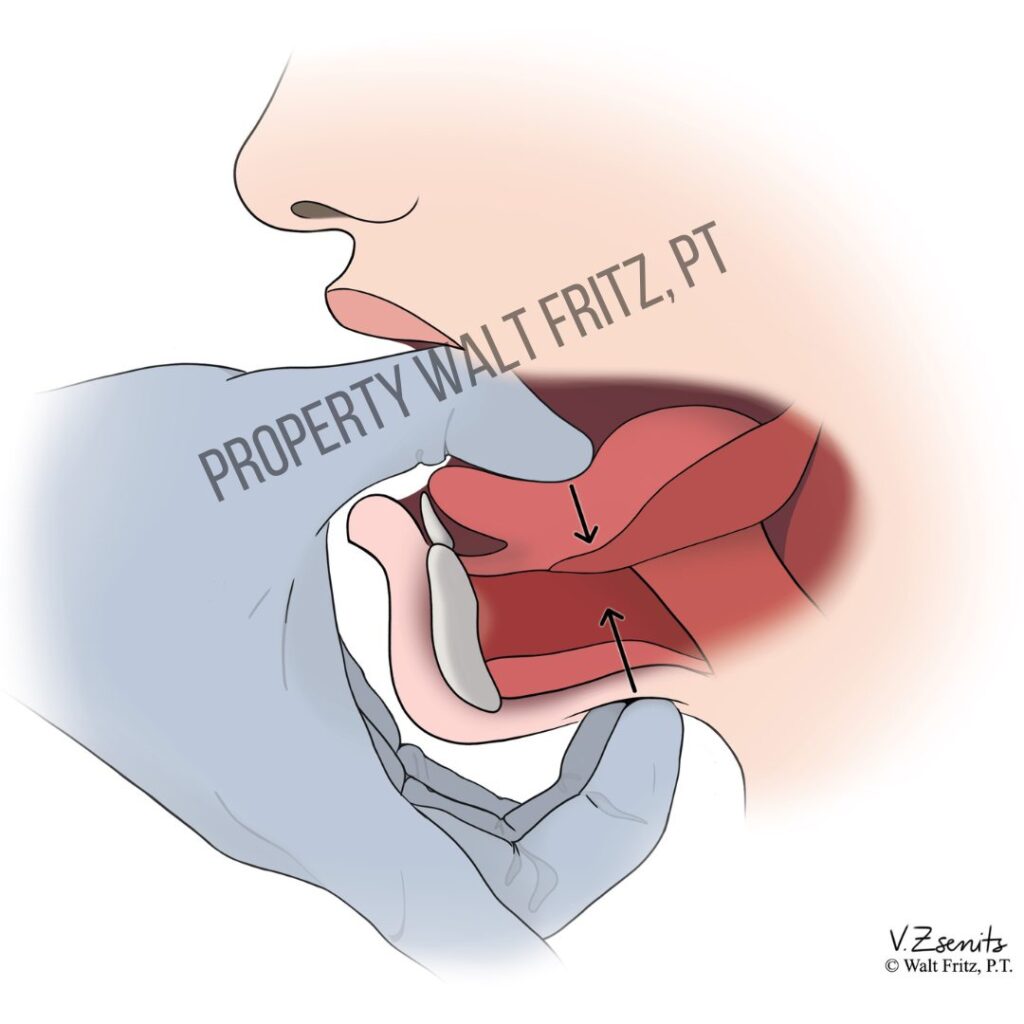
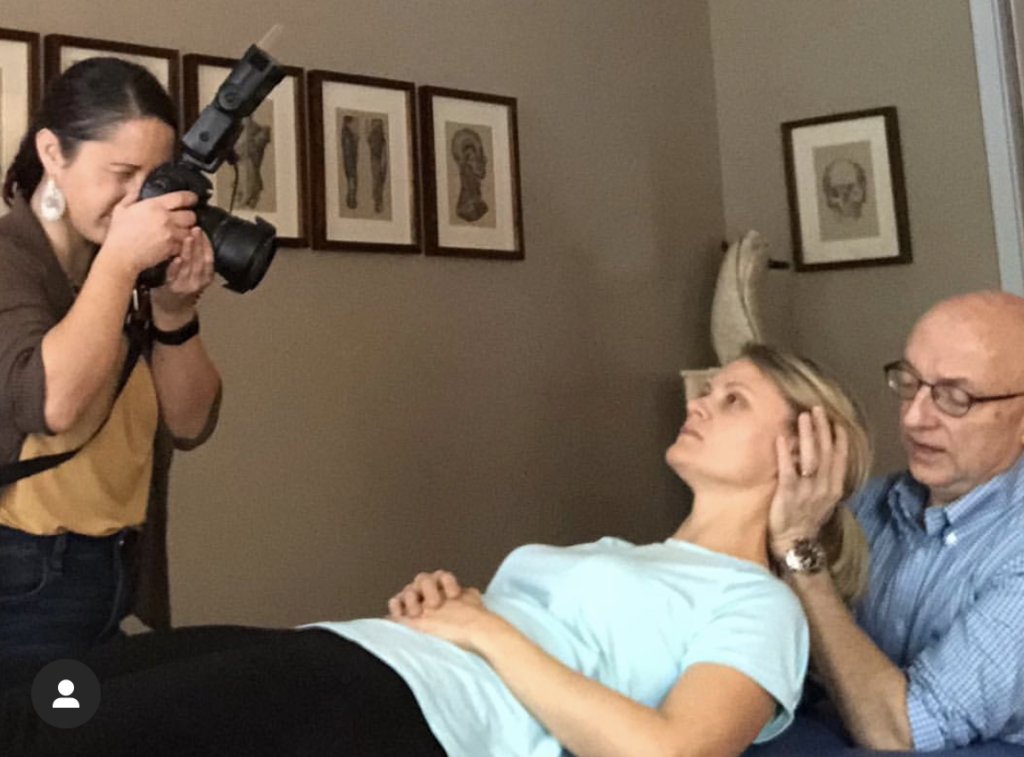
Amanda Malone is a Rochester, NY-based photographer who has provided the photo images for the book and all of Walt’s online courses. She can be reached through amandamalonephotography.com.

Sorry, comments are closed for this post.